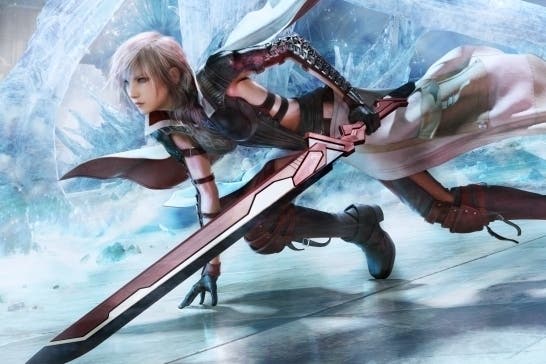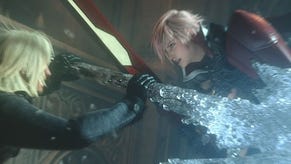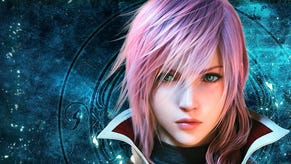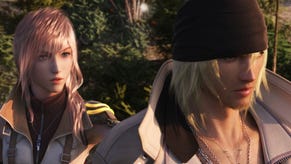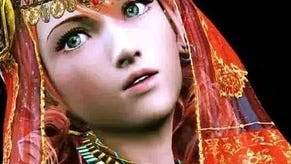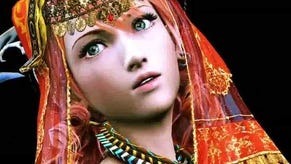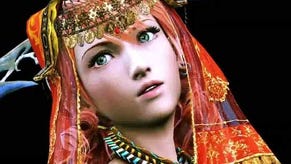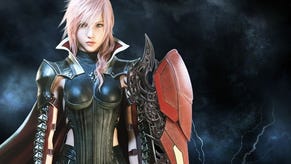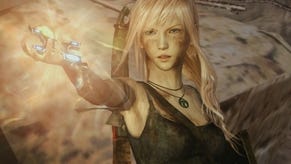Lightning Returns: Final Fantasy 13 review
Keeping time.
We've been here, mere hours away from the end of the world, before. World-saving has been the defining theme of video gaming's first 30 years, from fending off shuffling space invaders to skewering ideological threats in Civilization or Call of Duty. But it's rare that a game set on the eve of the apocalypse manages to elicit any real sense of urgency. Japanese role-playing games are the perfect example: the world may be perilously close to extinction and our band of heroes will be off racing giant chickens or pursuing a side-quest to upgrade a leather coat. We understand that the world is in danger and that we are instrumental in its salvation, but we also know that ours is an appointment which cannot be missed.
Lightning Returns, the third entry in the uneven Final Fantasy 13 trilogy, fixes this inconsistency. You are seven days from the apocalypse. A clock counts down in the top right hand corner of the screen, pausing only when you enter a menu screen, engage in a battle or return to a celestial waiting room at 6am to signal the end of that day. Other than these brief moments of respite, time in the game is finite - and the truth is that there isn't enough time on the clock to complete every quest and storyline before the endgame.
The world's inhabitants work to their own schedules and appointments; some missions are only available at a specific time on a specific day. The question then becomes: on what or whom will you spend your remaining time? And will your choices avert the impending disaster? As one of the game's later boss characters quips, "In this dying world nothing is more precious than time. Why do you waste it on me?"
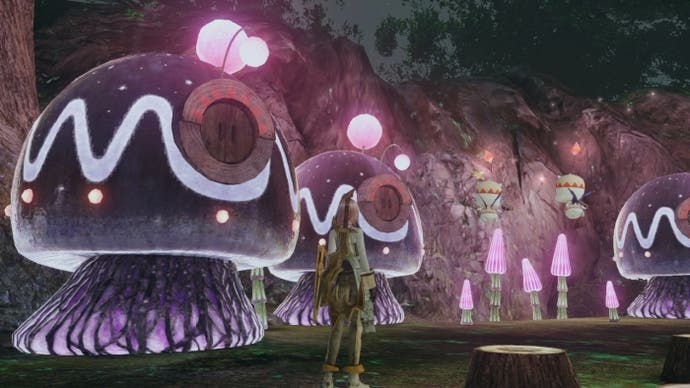
It's a structure that we've caught glimpses of before. Publisher Square Enix's own Brave Fencer Musashi pioneered an in-game clock whereby certain shops and events were only available at set times, while Nintendo's exemplary The Legend of Zelda: Majora's Mask laid down the idea of an imminent calamity that must be prevented against the clock. It's an unusually effective conceit in the context of a Japanese RPG, as it lends urgency and focus to the sprawling narrative. Flee from any battle in Lightning Returns and you not only lose out on its potential rewards, you incur a one-hour penalty - a strong incentive to fight to the bitter end of every encounter. A train ride between one of the game's four main locations can take up to an hour, a consequence that forces you to carefully plan your journey, and only move between locations when absolutely necessary.
"The new structure has a revitalising effect on the trilogy. It's arguably the most game-like Final Fantasy yet made"
The new structure has a revitalising effect on the Final Fantasy 13 trilogy. It's arguably the most game-like Final Fantasy yet made, as every decision you make has numerous knock-on effects. No longer are you merely tracing a single predestined line of plot, you are choosing which lines of plot to trace from a spider-web network of interlinking options. You choose where to be and when, which key missions to tackle in which order, and the minutiae of Lightning's armoury and ability sets. The game's premise states that Lightning is the only one who can save the world. 'Twas ever so in the Final Fantasy series, but never before has it been so easy for the player to mess it all up.
The resourceful development team has been less successful in fixing Final Fantasy 13's amateurish mess of a storyline, which has problems that run far too deep for any new chapter to solve. The basics of coherent storytelling - establishing an antagonist, establishing an objective, providing clear obstacles that hinder that objective - have been missing from the start of the trilogy. They remain absent in the broad sweep of narrative here, a deficiency that indisputably holds Lightning Returns back.

Lightning's lot, then, is to help the world's inhabitants in whatever task they have for her. Completing their requests earns 'Eradia', a substance of gratitude that adds time to the clock, up to a maximum of seven extra days. Meanwhile, Lightning must chase five key missions that help solve the riddle of how to save the world. The more tasks she completes for individuals, the more time she has to try to save the multitude.
Lightning becomes a god of small things: she might be called up to herd some sheep into a pen for a farmer, or to find a distraught child's missing doll, or to fetch some accessories for a juggler girl who wants to draw a larger crowd. These routine objectives can seem trivial under the eye of the apocalyptic clock, but they humanise Lightning in a way that the previous two games failed to do. In her newfound care for the little things she grows more likeable as a protagonist, even if her steely resolve is clear in every battle in which she stands alone (or occasionally flanked by a pet Chocobo) against a multitude of terrors.
Final Fantasy 13's battle system has always been its strongest asset and Lightning Returns offers perhaps the best and certainly most flexible version yet. Lightning has three costumes that can be equipped, each with its own armour, weapons, adornments and clutch of skills. Different set-ups might emphasise magical attacks, physical prowess or impenetrable defences. In battle you may switch between your three set-ups with a brisk tap, responding to the ebb and flow of the fight while attempting to parry incoming attacks and exploit your opponents' weaknesses.

Square Enix boasts that there are millions of costume permutations, each with their own benefits and drawbacks, and for tinkerers these strategic depths will prove irresistible. Creating a set-up of unique clothes, weapons and other statistical modifiers is like building a contraption: when everything works smoothly and efficiently, it's deeply pleasing to the human mind. Lightning Returns often delights in this way even if, during its most troubling boss battles (and this is undeniably one of the most challenging Final Fantasy games yet made), it equally infuriates.
The fine-detail strategy is reflected in the broader game strategy. EP is perhaps your most valuable resource in the game. This substance can be used to freeze time during battles (allowing you to attack the static foe), heal Lightning and, most usefully, temporarily stop the clock while in the world. You begin with just five EP per day, although this slightly increases as the week progresses. EP is refilled in tiny increments by completing battles. Optimal players will spend EP exclusively on freezing time, extending the 24-hour day by a few hours, thereby allowing for more missions to be completed and more of the world to be explored. Each of the game's systems pulls pleasingly in the same direction.
It's a strong end to an uneven trilogy, then. There is little consistency across the three games, from the ultra-focused linearity of Final Fantasy 13, to the dimension-hopping skittishness of its sequel and on to this almost entirely freeform conclusion. It's a deliberate demonstration from the team that it's able to deliver on various approaches to game design (and tone) within the Final Fantasy umbrella. From its dazzling battle system to its overarching temporal puzzle, this is the best of the set - even if it's dragged down by an exhaustingly impenetrable plot that its creators will no doubt be pleased to be done with.
Need a helping hand with the game? Take a look through our Lightning Returns walkthrough for quest-by-quest help.
